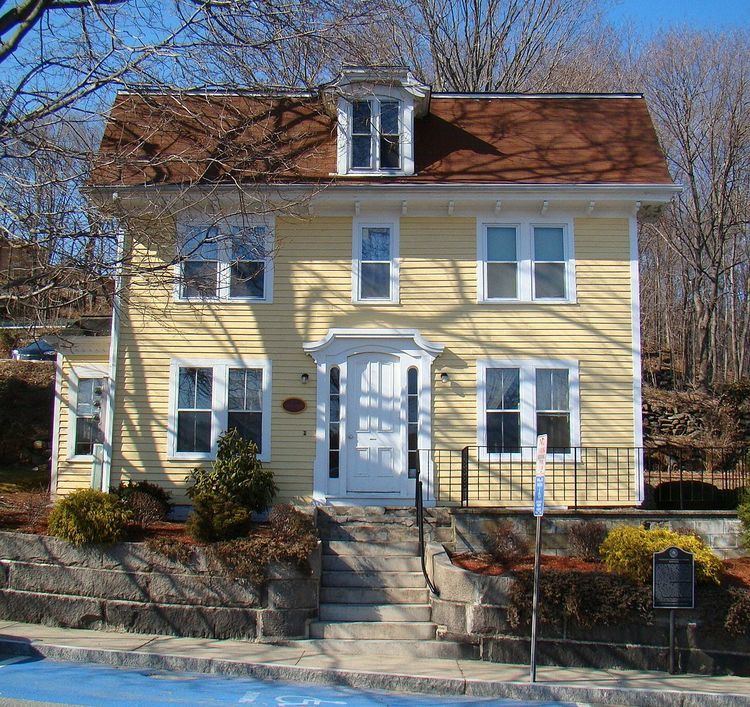NRHP Reference # 99000431 Added to NRHP 19 April 1999 | Area 15 ha | |
 | ||
Architectural style Greek Revival, Italian Villa, et al. | ||
The Jail Hill Historic District is located in Norwich, Connecticut. The district consists of 74 buildings and was added to the National Register of Historic Places on April 19, 1999.
A plaque, placed by the Norwich Historical Society at the entrance to the Jail Hill district states the following about Norwich's African-American Heritage, in which Jail Hill played an important role:
"In the late 1600’s and 1700’s, Norwich was an important colonial seaport trading with the West Indies. Slaves were imported to Southeastern Connecticut from the West Indies during this period. They became personal servants, laborers and craftsmen. By 1756, the Black community numbered 223. Many had purchased their own freedom or had been freed by their owners. Former slave Guy Druck, a blacksmith, built this house at 76 Church St. in the 1850’s. His skills were renowned and actively sought by ship builders for components such as anchors.
Blacks from Norwich, such as Leb Quy, fought in the American Revolution. The first public outcry against slavery in Norwich was published in the Norwich Packet in 1774. Connecticut later passed legislation to gradually abolish slavery in 1784. In the 19th century, black settlement centered on Jail Hill, where a thriving community existed by the mid-century. Discriminated against for employment in the mills, Norwich’s Black residents worked on the docks, railroads, steamboats and in hotels. Many, like escaped slave James Linsley Smith, a shoemaker, were engaged in crafts. Others owned restaurants and small businesses."
The district encompasses a working-class residential area whose development began in the 1830s and was largely complete by 1865. Houses are of modest size and scale, and are typically vernacular interpretations of Greek Revival and Italianate styling, although later styles such as Queen Anne are also present. The district takes its name from the 1834 jail that was built on the hill, whose foundations still stand on an overgrown lot.
